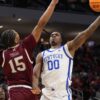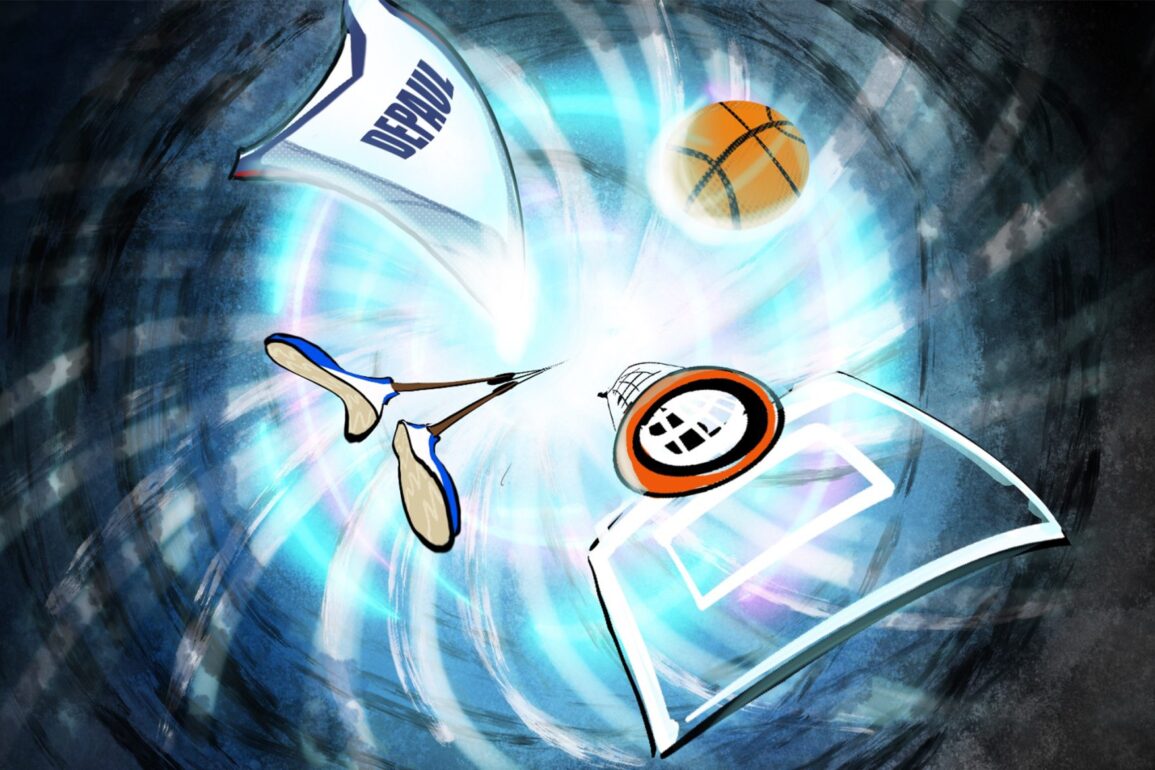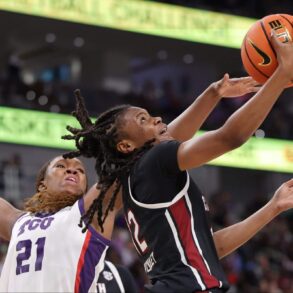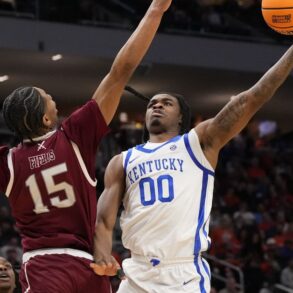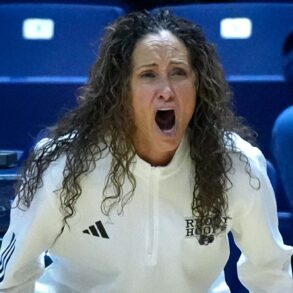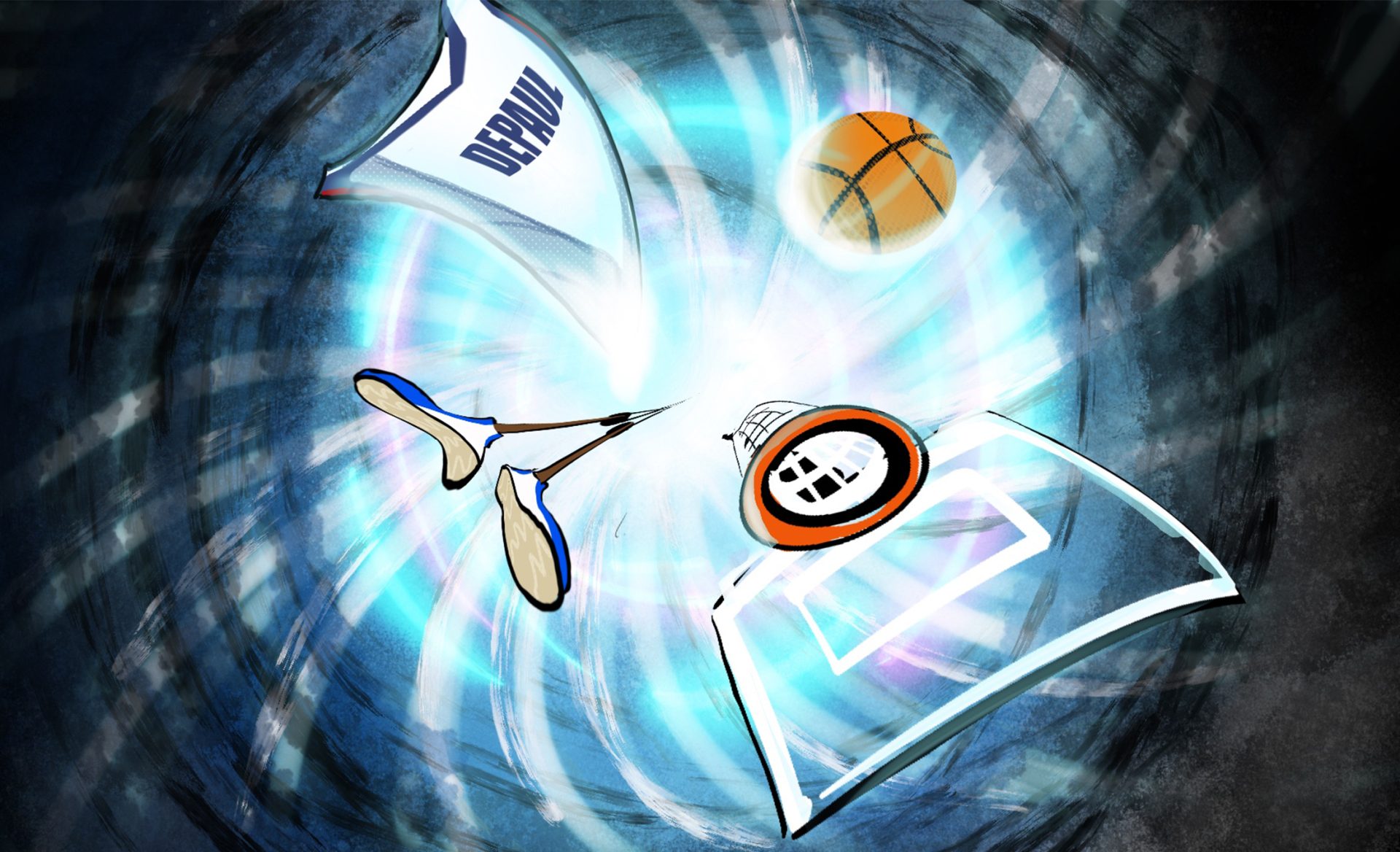
This year’s NCAA men’s basketball tournament will be remembered for a clash of the formidable: all four one-seeded teams in the bracket met in the Final Four for just the second time in history. Records were broken, nets were cut down, and only the strong survived.
In the women’s tournament, a high-powered upset took center stage. The program that has defined the 2020s — Dawn Staley and the South Carolina Gamecocks — were defeated by Paige Bueckers and the Connecticut Huskies, placing the dominators of yonder back on the pedestal.
At this point, the tournaments were merely the calm before the storm.
According to Front Office Sports, this year’s transfer portal broke records of its own — it drew in more than 2,300 men’s basketball players and 1,500 women’s basketball players. This is a roughly 142% increase from the portal’s first go-around in 2019.
As the portal closed Tuesday, April 22, for men’s basketball and Wednesday, April 23, for women’s basketball, fans can finally take a deep breath and sort through the chaos.
Or can they?
Transfer portal
At its core, the transfer portal helps players publicize their intention to switch from institution to institution. Since the portal was introduced in 2018, players no longer have to step aside for one season if they decide to transfer.
An example of college basketball before the transfer portal is DePaul alumnus Max Strus, who was forced to take a year off after transferring to DePaul from Lewis University in 2016. He then entered the NBA at 23 years old instead of 22 after his four years of college.
Now take Aneesah Morrow, who was able to transfer to LSU in 2023 after two stellar seasons at DePaul. She was able to go right to work, playing in a different jersey the same calendar year she transferred.
Criticisms of the transfer portal, especially this season from several head coaches, target when the portal opens. This season, it opened March 24 for men’s basketball and March 25 for women’s basketball. The Sweet Sixteen had not even started for each respective tournament. Teams with basketball left to play had to strike a balance between game planning and portal shopping.
DePaul men’s basketball was no exception — they opened College Basketball Crown play on April 1 with several of their own players already in the portal and unavailable to play.
They landed their first transfer the next morning after their elimination.
Just because we have passed closure of the portal does not mean we are done yet. This deadline was only for players entering their name into the portal, but players do not have to be committed to their next schools yet. They can even choose to return to the school they just finished their season at, if their school chooses to have them back.
Da’Sean Nelson did just this in 2023 before transferring to Eastern Michigan the next offseason.
Those that still remain in the portal post-closure include two of the top five transfers on 247 Sports’ 2025 transfer class: PJ Haggerty and RJ Luis Jr.
Name, Image and Likeness
The changes in the transfer portal are due to the financial incentive of name, image and likeness (NIL). After the Supreme Court unanimously ruled that student athletes are not subject to “amateurism” in NCAA v. Alston in June 2021, the door was opened to athletes profiting off of their brands.
Players now profit from jersey sales, corporate partnerships, video games and anything else that involves the use of their name, image and likeness.
How does this work?
Each year, schools will create an NIL budget, based on charitable donations, corporate partnerships and advertisers, which they can share among their athletes. They then divide up the budget per sport, with more money going towards sports like football than sports like golf that often don’t have large audiences.
DePaul recruits high school seniors, as always, but they have spent most of their NIL budget through the transfer portal. Many schools have morphed to prioritize the portal over recruiting high school and overseas talent.
These players were still not paid directly by their schools because of the NCAA’s “pay-for-play” policy, which bars athletes from choosing schools based on the money those schools offer. Payment had to go through third parties.
Why is this last paragraph in the past tense? Well, it seems things have changed again.
Revenue sharing
In 2020, Grant House filed a lawsuit against the NCAA challenging NIL rules and arguing that direct payments should be made to athletes. The day after the NCAA men’s national championship, a settlement was approved to allow schools to directly pay athletes.
We are now in a revenue-sharing model of college sports. Though the settlement isn’t fully approved yet, a few changes stand in the way of over 150 rules being cut back to pave the way for direct payments.
U.S. District Judge Claudia Wilken wrote on April 23 that the NCAA would need to “phase in or grandfather” roster limits for the settlement to go through. Assuming it does, NCAA Division I schools will be able to distribute up to $20.5 million per school directly to athletes.
It is important to note that direct payments come from athletics revenue rather than university revenue. The sources of this revenue mostly come from ticket sales, conference media rights and partnerships.
How did DePaul fare?
Because the revenue sharing model has not been finalized yet, DePaul went through one last transfer portal cycle with strictly NIL partnerships rather than tacking on direct payments.
DePaul women’s basketball’s offseason began with a coaching change, with eight players entering the portal. Coaching changes generally usher in transfer activity because different coaches prioritize different skills, tendencies and lineups.
Another caveat is that players have a 30-day window once a coach steps down or is fired to enter the transfer portal regardless of what point the coaching change is in the offseason. Yesterday, April 27, was the last day players on the roster could enter.
DePaul had nine players on their roster when the portal closed on Sunday, inking one transfer. The class standing listed for both teams is for the 2025-26 season.
- Aizhanique Mayo, junior guard (Xavier transfer)
- Gina Davorija, freshman guard
- Alayna West, sophomore guard
- Sumer Lee, junior guard
- Shakara McCline, junior guard
- Natiah Nelson, sophomore guard
- Ally Timm, sophomore guard
- Kate Clarke, senior guard
- Meg Newman, senior forward
On the men’s side, fourteen players are committed to head coach Chris Holtmann’s program for next season, six of them transfers.
- RJ Smith, junior guard (Colorado transfer)
- Brandon Maclin, senior guard (Radford transfer)
- Amsal Delalic, sophomore guard (Pittsburgh transfer)
- Kaleb Banks, senior forward (Tulane transfer)
- Jeremy Lorenz, junior forward (Wofford transfer)
- Khaman Maker, sophomore center (St. John’s transfer)
- Kruz McClure, freshman guard
- Nate Kasher, freshman guard
- Layden Blocker, junior guard
- CJ Gunn, senior guard
- Sekou Konneh, freshman forward
- Théo Pierre-Justin, sophomore forward
- NJ Benson, senior forward
- Isaiah Medina, freshman center
After the shuffling and chaos of the transfer portal window, it remains to be seen whether DePaul’s basketball programs weathered the storm.
Related stories:
Stay informed with The DePaulia’s top stories,
delivered to your inbox every Monday.
This post was originally published on this site be sure to check out more of their content.



